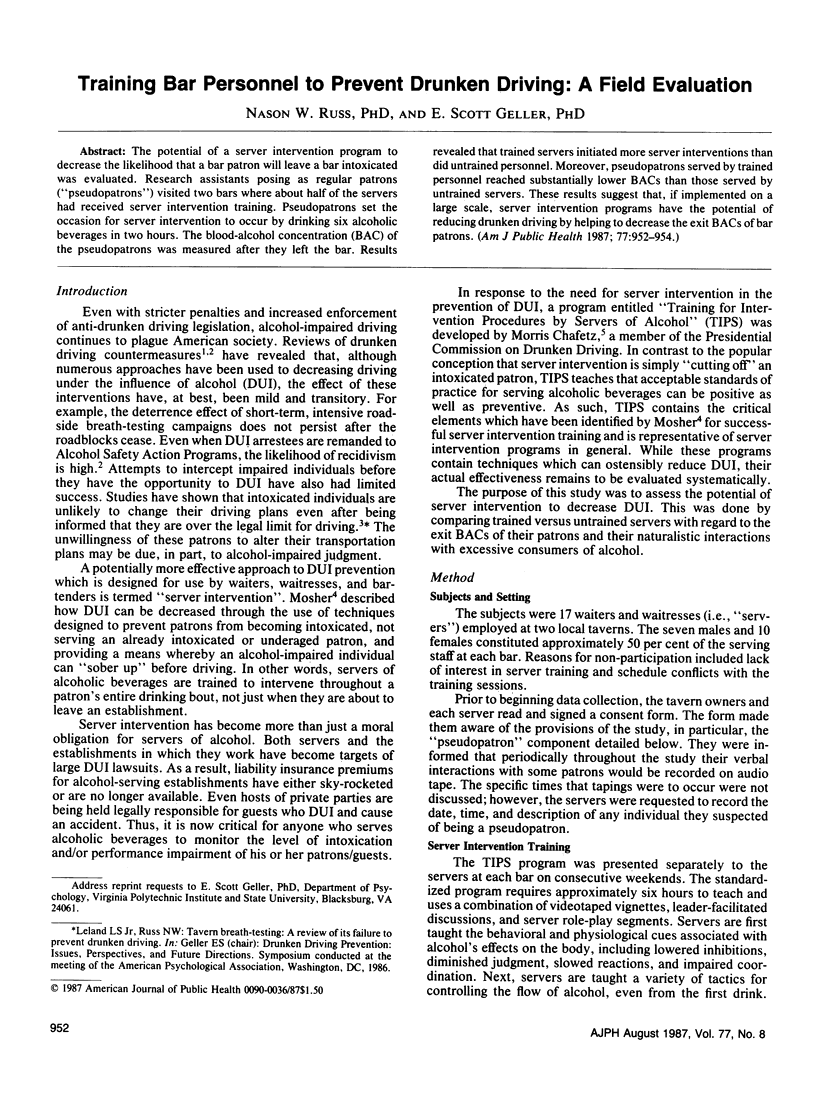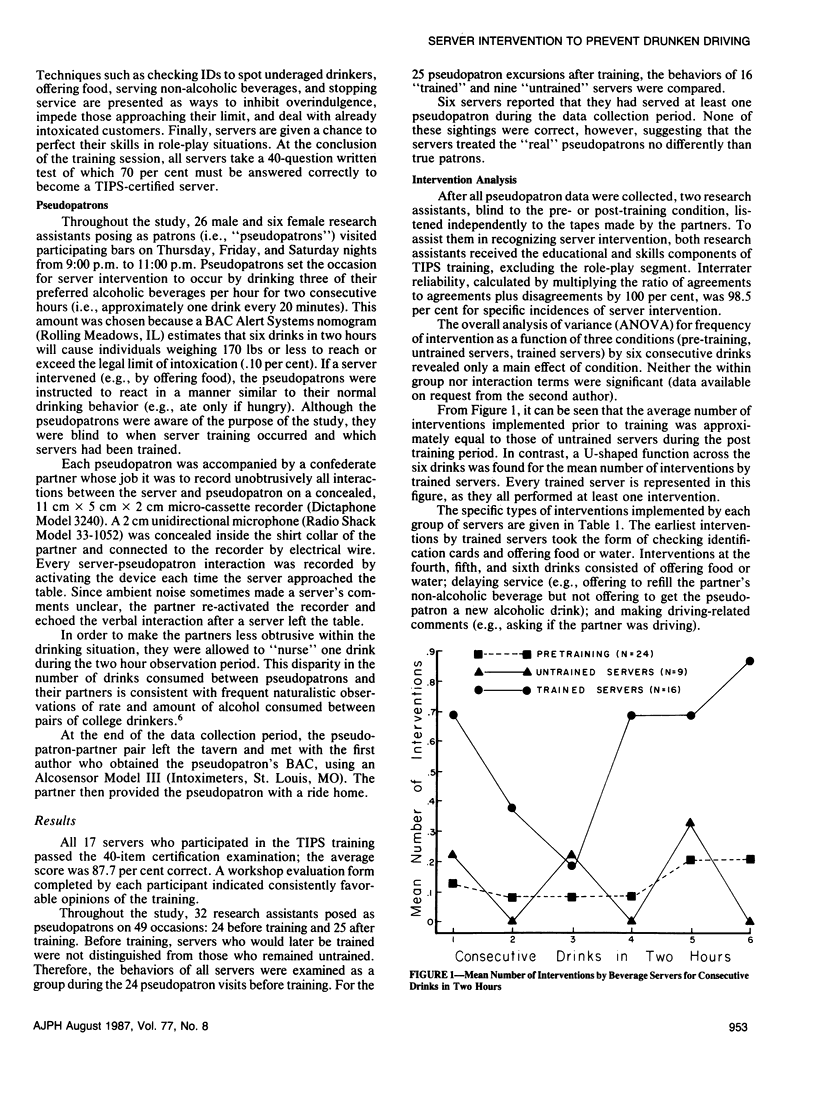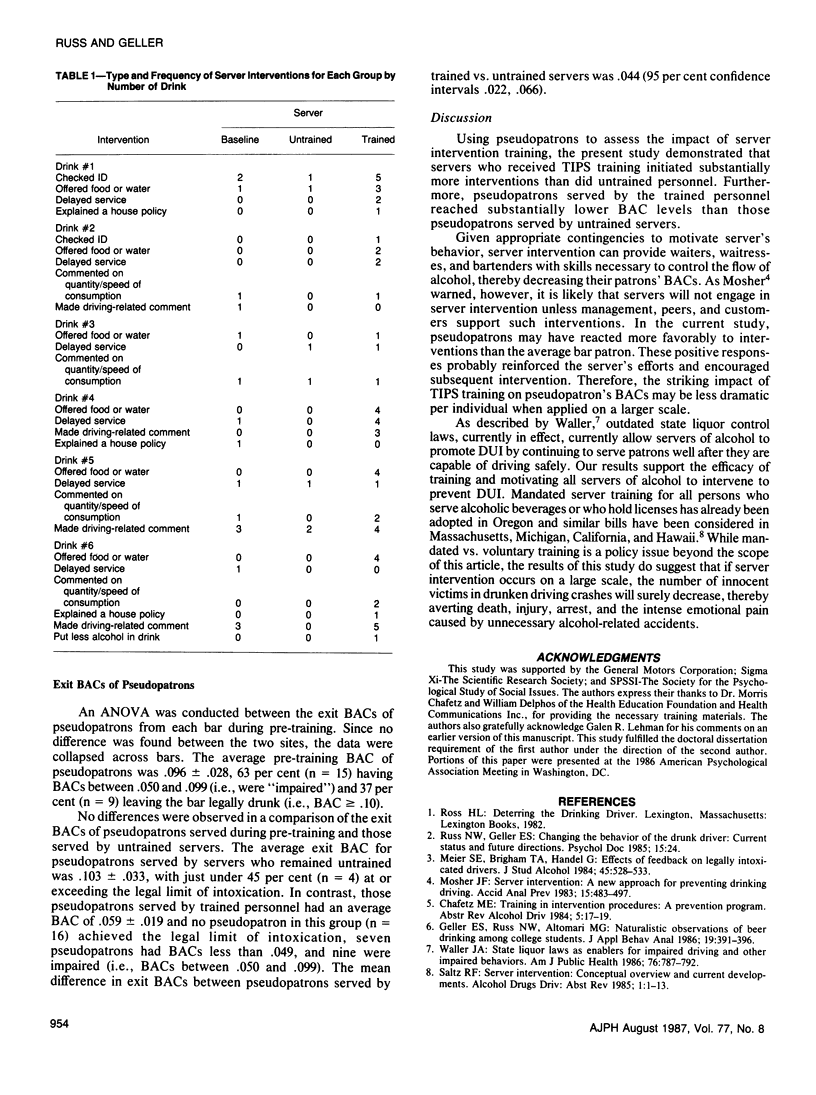Abstract
The potential of a server intervention program to decrease the likelihood that a bar patron will leave a bar intoxicated was evaluated. Research assistants posing as regular patrons ("pseudopatrons") visited two bars where about half of the servers had received server intervention training. Pseudopatrons set the occasion for server intervention to occur by drinking six alcoholic beverages in two hours. The blood-alcohol concentration (BAC) of the pseudopatrons was measured after they left the bar. Results revealed that trained servers initiated more server interventions than did untrained personnel. Moreover, pseudopatrons served by trained personnel reached substantially lower BACs than those served by untrained servers. These results suggest that, if implemented on a large scale, server intervention programs have the potential of reducing drunken driving by helping to decrease the exit BACs of bar patrons.
Full text
PDF


Selected References
These references are in PubMed. This may not be the complete list of references from this article.
- Geller E. S., Russ N. W., Altomari M. G. Naturalistic observations of beer drinking among college students. J Appl Behav Anal. 1986 Winter;19(4):391–396. doi: 10.1901/jaba.1986.19-391. [DOI] [PMC free article] [PubMed] [Google Scholar]
- Meier S. E., Brigham T. A., Handel G. Effects of feedback on legally intoxicated drivers. J Stud Alcohol. 1984 Nov;45(6):528–533. doi: 10.15288/jsa.1984.45.528. [DOI] [PubMed] [Google Scholar]
- Waller J. A. State liquor laws as enablers for impaired driving and other impaired behaviors. Am J Public Health. 1986 Jul;76(7):787–792. doi: 10.2105/ajph.76.7.787. [DOI] [PMC free article] [PubMed] [Google Scholar]


